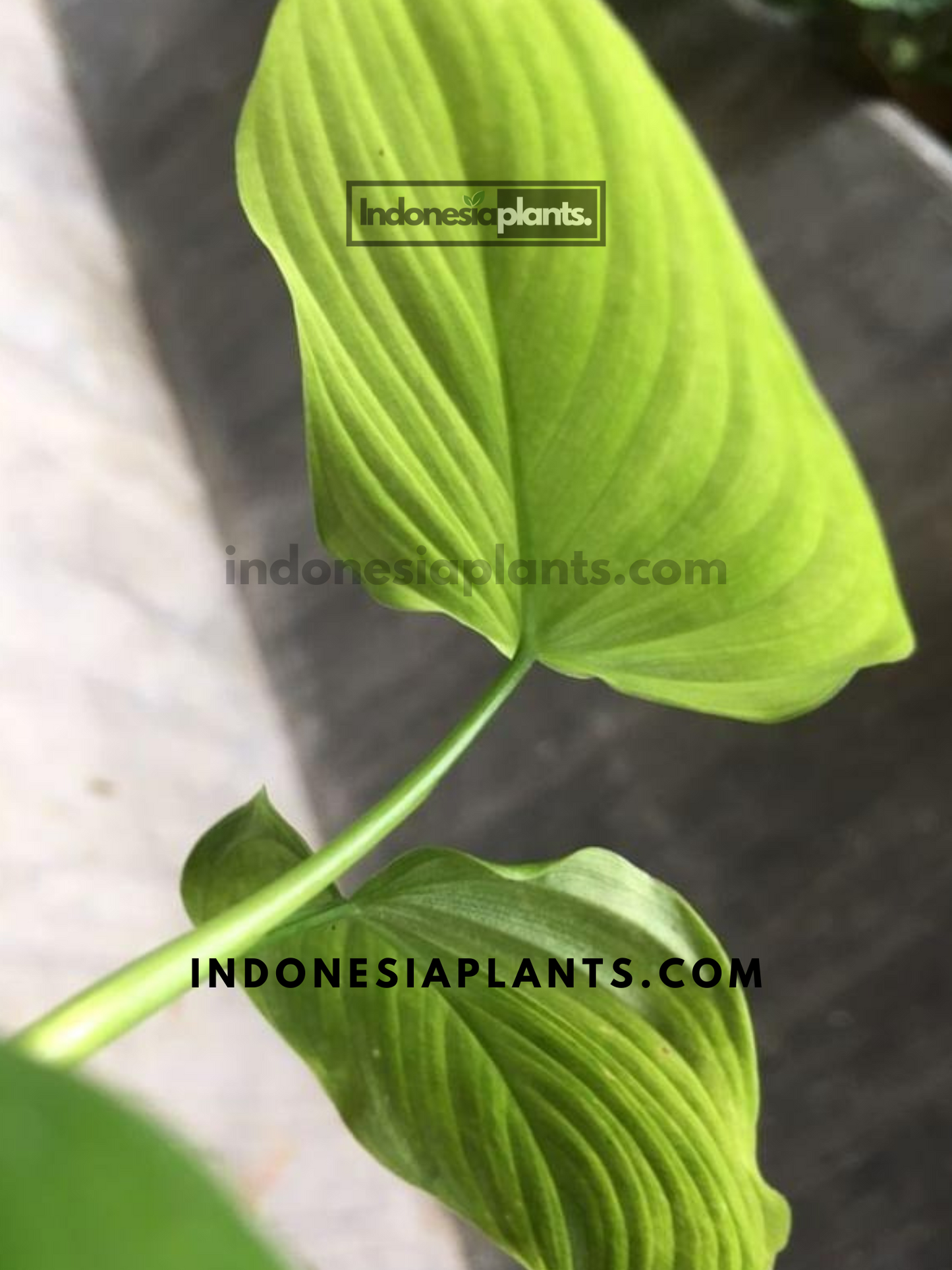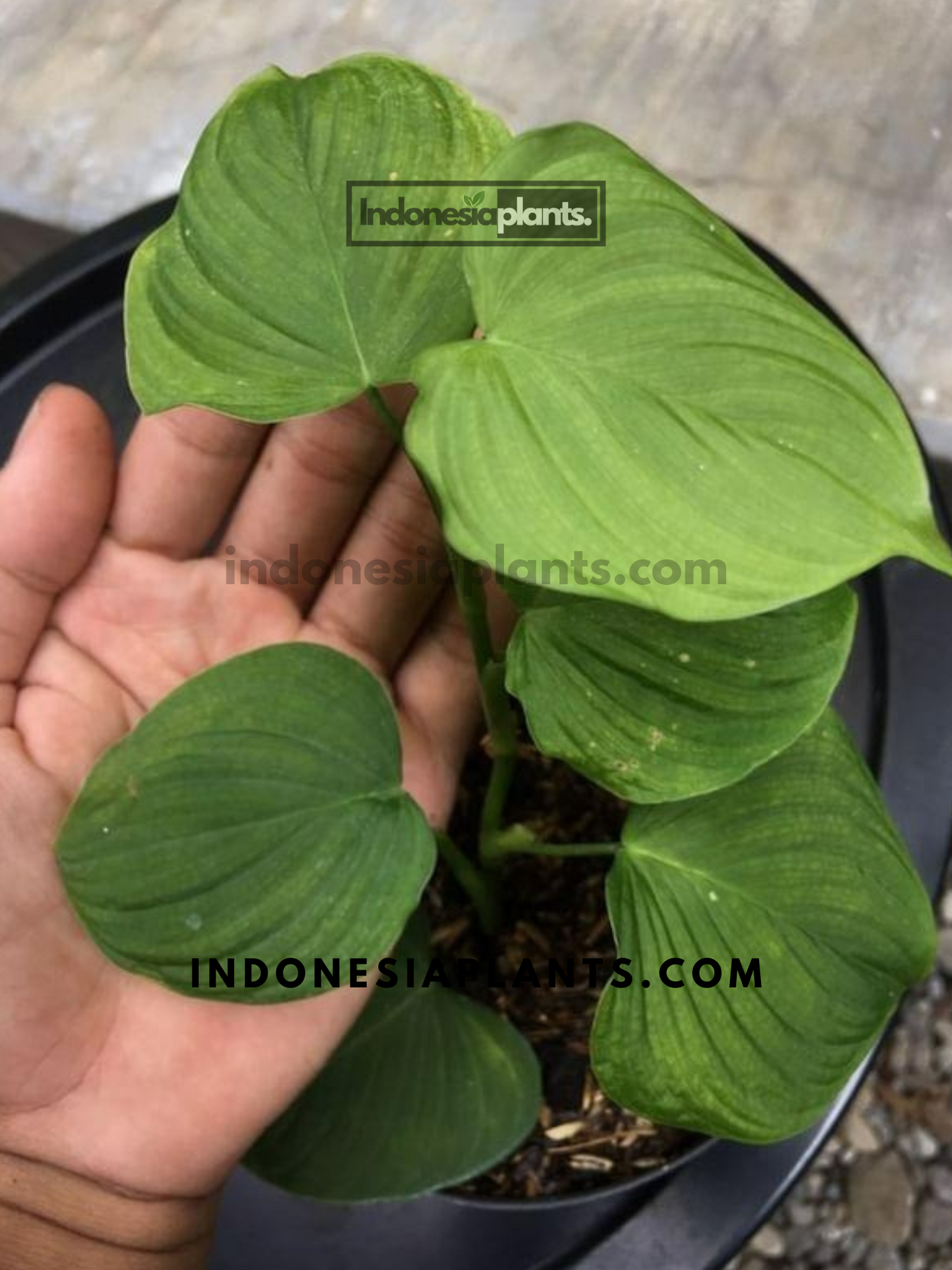indonesiaplants
Philodendron Fibraecataphyllum
Philodendron Fibraecataphyllum
Couldn't load pickup availability
See photos for reference of the plant features only. Sent to you more likely as featured with descriptions below:
Minimum of 4 leaves
Rooted not cuttings
Philodendron Fibraecataphyllum: A Hardy Yet Beautiful Addition to Any Collection
The Philodendron Fibraecataphyllum is a resilient and striking tropical plant known for its large, deeply lobed leaves and robust growth habit. This variety is perfect for both beginner and seasoned plant collectors, offering beauty with minimal care needs. Its exotic appearance brings a touch of the tropics to your home or office.
Unique Characteristics of Philodendron Fibraecataphyllum:
- Large, Lobed Leaves: Its signature feature is the large, deeply lobed foliage that creates a dramatic, tropical appearance.
- Hardy Nature: Known for being particularly hardy, this variety can adapt well to a variety of indoor conditions.
- Vibrant Green: The deep green leaves maintain their vibrant color year-round, providing consistent beauty.
What plant is this, in one line?
A refined, climbing philodendron with elongated, tailored leaves and a calm satin sheen—built for vertical, architectural displays in bright, filtered light.
Why do collectors mention the “fibrae” part of the name?
The species epithet nods to its fibrous cataphylls (the sheathing bracts around new growth). As leaves mature and cataphylls dry, they often leave tidy fibers near the nodes—a subtle, natural detail that collectors appreciate.
How does it grow indoors (trail or climb)?
It’s happiest climbing. On a slim moss pole, coco totem, or flat cedar board, internodes shorten, leaves present larger and more composed, and the whole plant reads like a slim column—great for shelves, consoles, or small corners that need height without bulk.
What does the foliage look like?
Expect elongated, lance-to-narrow sagittate blades with a defined midrib and smooth margins. Tones commonly sit in the mid- to deep-green family with a satin finish that glows in side light (exact hue varies naturally by plant and lighting—align wording to your photos).
What lighting makes it look its best?
Aim for bright, diffused daylight—east-window glow or any luminous zone behind sheers. Consistent, all-day brightness keeps leaf spacing tight and finishes clean. Guard tender new leaves from prolonged, harsh midday sun.
How should I water it?
Let the top 2–3 cm (≈1 in) of mix dry, then water thoroughly and allow complete drainage. Choose a calm, repeatable rhythm; avoid boom-and-bust cycles (soaked → parched) that can cause edge stress on the thin lamina.
What potting mix works?
Use an oxygen-forward aroid blend: ~40% chunky orchid bark, 25% coco fiber/coir, 20% pumice/perlite, 10% horticultural charcoal, plus a light sphagnum buffer. The goal is airy structure with steady, not stagnant, moisture.
What’s the comfort range at home?
It’s easygoing at 18–29 °C (65–85 °F) and ~50–70% RH with gentle airflow. A mild humidity bump smooths unfurling and refines surface sheen; avoid AC blasts or heater streams directly on foliage.
How do I train and style it?
Secure each node to the support with soft ties so the stem tracks closely—this shortens internodes and elevates leaf size. Rotate a quarter-turn every two weeks for balanced exposure. Choose matte stone, sand, ecru, or charcoal planters; side-lighting carves a clean highlight along the midrib for photos.
What about feeding?
Light nutrition at ¼–½ strength during active months sustains steady sizing and leaf quality. If spacing stretches, prioritize more even luminance (still filtered) before increasing fertilizer.
Common signals & quick fixes?
- Long gaps / smaller leaves: increase overall brightness; ensure the stem hugs the support.
- Edge crisping: often late watering or dry drafts—tighten cadence and soften airflow.
- Dull new leaves: check light first, then resume light feeding.
- Leaning column: add a discreet tie point just below the newest node to recenter the line.
Is it pet-safe?
As with many aroids, keep foliage out of nibbling reach.
Why this species in a curated mix?
It’s a shape specialist—slender, architectural, and camera-friendly. Where broad-leaf aroids can feel heavy, fibraecataphyllum brings lift and composure, pairing beautifully with velvety Anthurium (plush contrast) or a broad-leaf Monstera (scale and negative space).
Kindly reach out to us at indonesiaplants@gmail.com if you have difficulties in your purchase or have any questions.







